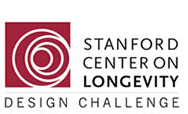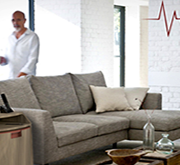City Cart
City Cart (Mobility)
Team lead: Brandon Lopez
University: San Francisco State University
City Cart is a walker/cart hybrid designed to help users with mobility issues safely and easily make shopping trips. A finalist in the Mobility category of this year’s Design Challenge, it was created by design students at SF State’s Product Design 2 course.
“Our professor Ricardo Gomes explained the design brief to us and how we would have the opportunity to design a shopping assistant for the elderly or people with mobility issues,” says team lead Brandon Lopez. “Our team wanted to enter because we all have a dream of being able to help others with our ability to design.”
Lopez credits the inspiration for City Cart to Dr. June Fisher, a colleague of Professor Gomes who offered guidance on the design:
“June loves to visit her local farmers’ market and shop for produce, but her current mobility doesn’t allow her to comfortably do so without help,” says Brandon. “We wanted to design a product that would allow June to take the walk to the farmers market, fill up her basket with everything she needs, and return home without assistance from anyone else.”
Prototyping City Cart
“Our entry was created over an entire semester. We created many different versions on paper and 3D modeling software that led us to create three different full-scale prototypes made of wood and steel. We also 3D printed a quarter scale prototype of our final design.”
Lessons Learned from Designing City Cart
“The problem must dictate the entire design. From the start, we had many ideas that we believed would assist our users, but found out that we needed to slow down our creative minds and listen to the actual people we are designing for. Just talking with potential users and providing them with prototypes to test allowed us to receive invaluable feedback. This feedback was then repeatedly fed back into our next iterations until we created a design that solved our users’ problem.”
Future Plans for City Cart
“If we win the Challenge, we would love to work to bring City Cart to market. Throughout our research and development, we have found that there is a real problem that has not been addressed. If City Cart became an actual product, many seniors and disabled people would have a product that would make their daily lives a little easier.”







